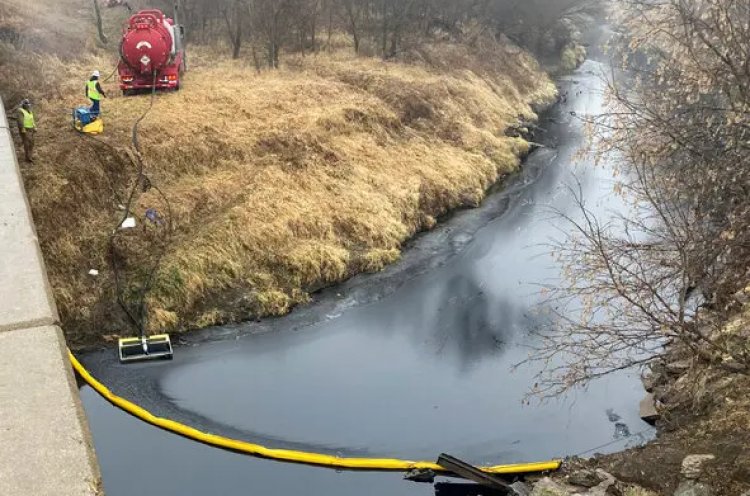An oil spill.. threatens life in the US state of Kansas
The Keystone pipeline spill in a creek running through rural pastureland in Washington County, Kansas, about 150 miles northwest of Kansas City.

The US authorities reported that nearly 14,000 barrels of crude oil had leaked into the waters in Kansas, USA, from the Keystone pipeline owned by the Canadian company TC Energy.
The amount of oil spilled this week, estimated at 2.2 million liters, is the largest since 2013.
threatens life in Kansas
according to federal data, A ruptured pipe dumped enough oil this week into a northeastern Kansas creek to nearly fill an Olympic-sized swimming pool, becoming the largest onshore crude pipeline spill in nine years and surpassing all the previous ones on the same pipeline system combined.

details of the major disaster
The details of the major disaster are revealed through ,The Keystone pipeline spill in a creek running through rural pastureland in Washington County, Kansas, about 150 miles northwest of Kansas City, also was the biggest in the system's history.
according to U.S. Department of Transportation data The operator, Canada-based TC Energy, said the pipeline that runs from Canada to Oklahoma lost about 14,000 barrels, or 588,000 gallons.

The spill raised questions for environmentalists and safety advocates about whether TC Energy should keep a federal government permit that has allowed the pressure inside parts of its Keystone system — including the stretch through Kansas — to exceed the typical maximum permitted levels. With Congress facing a potential debate on reauthorizing regulatory programs, the chair of a House subcommittee on pipeline safety took note of the spill Friday.
A U.S. Government Accountability Office report last year said there had been 22 previous spills along the Keystone system since it began operating in 2010, most of them on TC Energy property and fewer than 20 barrels. The total from those 22 events was a little less than 12,000 barrels, the report said.
Citizens warning
The EPA said no drinking water wells were affected and oil-removal efforts will continue into next week. No one was evacuated, but the Kansas Department of Health and Environment warned people not to go into the creek or allow animals to wade in.


 Shrouq
Shrouq 












